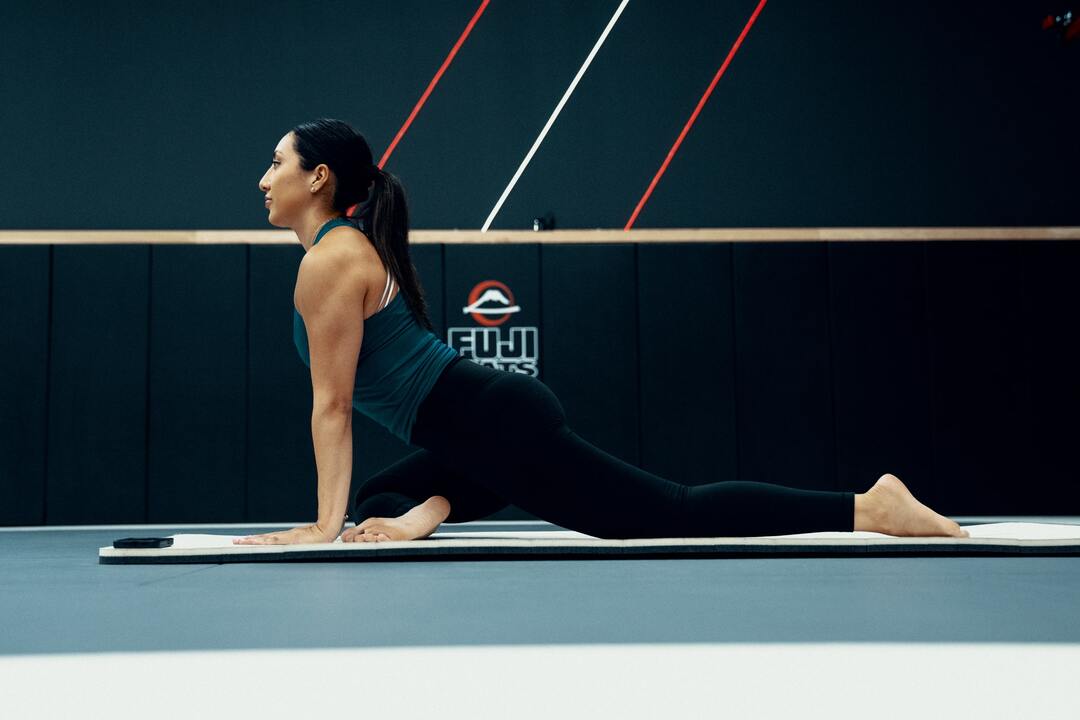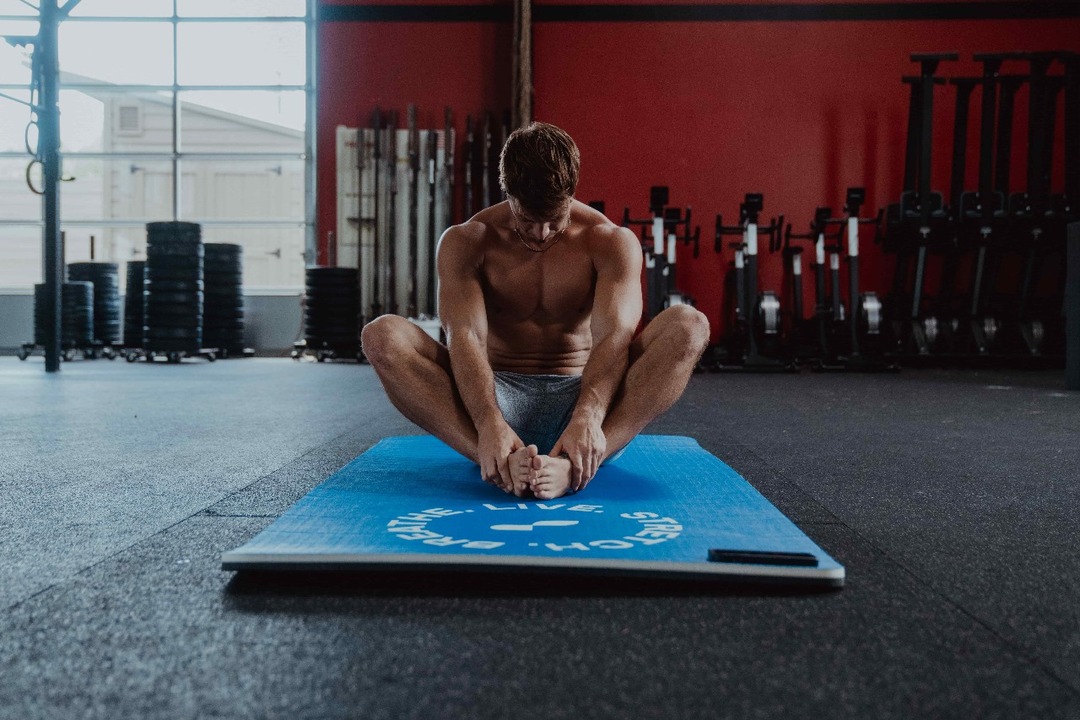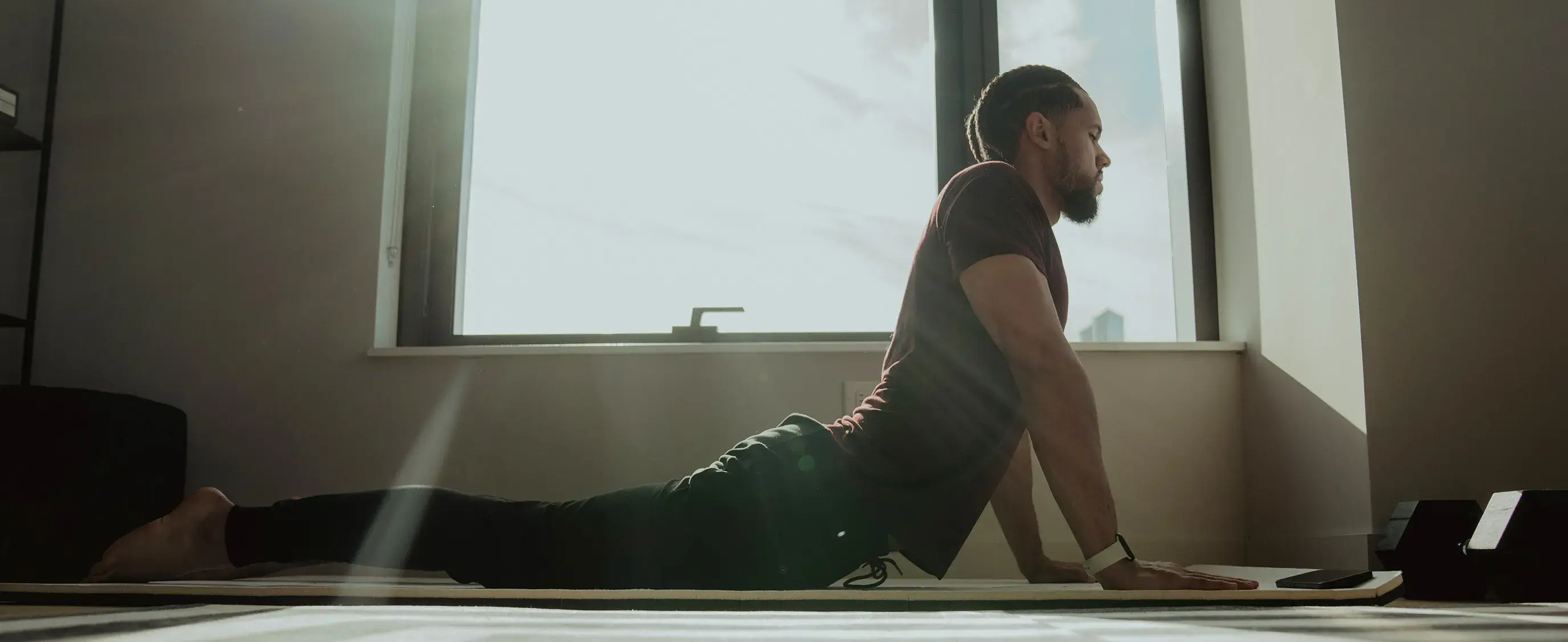That heavy, tight feeling in your legs shows up at the worst times, after a long commute, at the top of the stairs, or the morning after a challenging workout. This article breaks down common causes, such as muscle tightness, cramps, poor circulation, swelling, tight calves and hamstrings, and reduced flexibility, and offers clear, practical steps to relieve the discomfort and Exercises for Stiff Neck and Shoulders. Read on to finally understand why your legs feel this way and discover simple, effective stretches and mobility habits so you can move freely again.
Pliability's mobility app picks up where this article leaves off, offering guided stretches, short routines, and mobility drills that target stiffness, improve range of motion, and support better circulation so you can turn insight into action.
Why Do My Legs Feel Tight and Heavy?
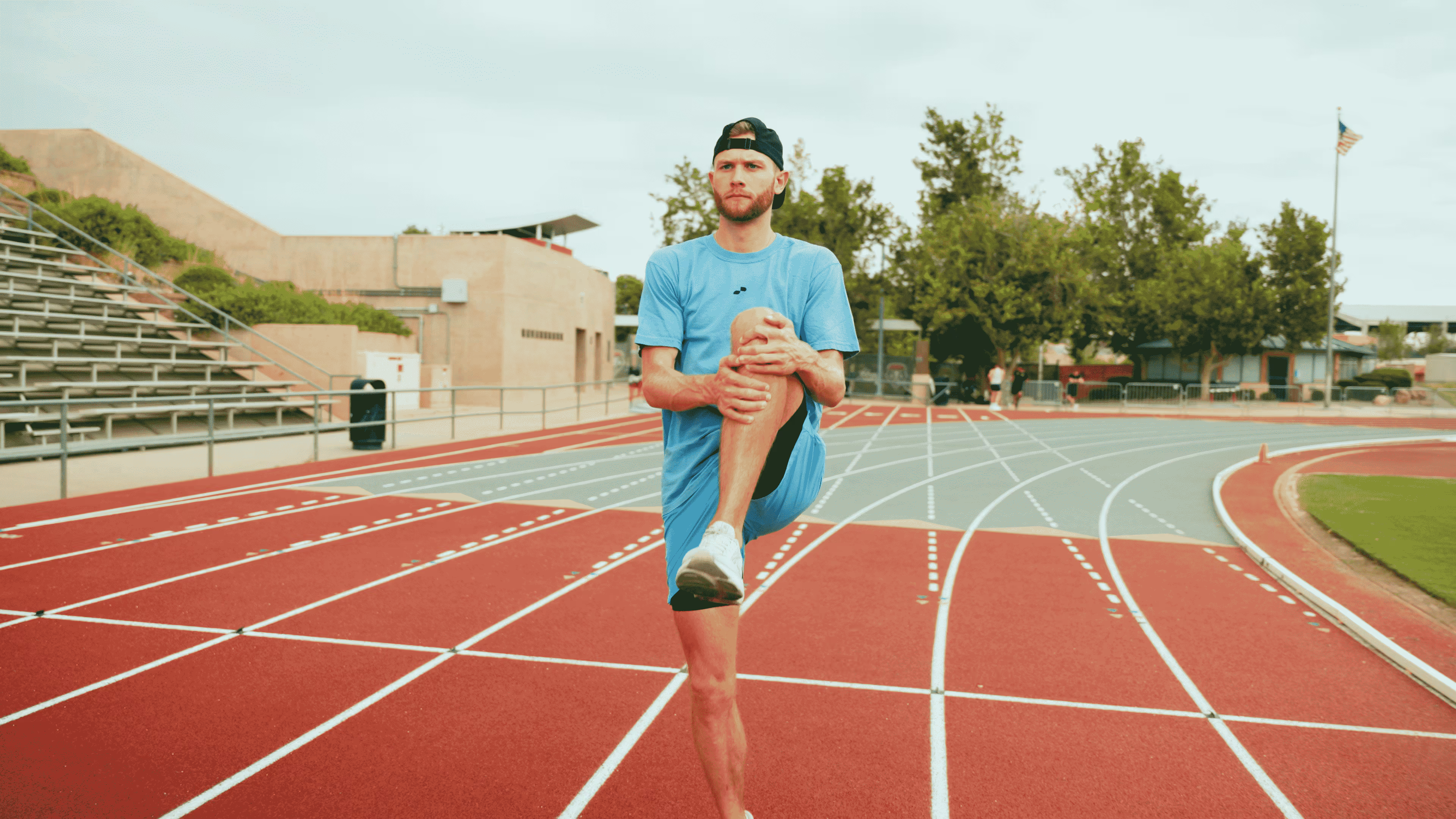
Staying in one position reduces the upward return of blood and lymph from your lower legs. Gravity allows fluid to pool around the ankles and calves, which stretches the tissues and triggers a sensation of tightness and heaviness.
Shifting your posture, walking briefly every 30 to 60 minutes, or elevating your feet above heart level for 10 to 20 minutes helps move the fluid back toward the trunk and eases the pressure in the legs.
When Poor Circulation Makes Legs Feel Heavy and Tight
Reduced blood flow to the lower limbs results in fatigue, aching, and a sensation that the legs feel weighed down. Peripheral artery disease narrows arteries, causing cramping or pain when walking that improves with rest.
Chronic venous insufficiency occurs when vein valves fail, allowing blood to pool in the legs, which leads to swelling, aching, and tightness. Smoking, diabetes, high blood pressure, and high cholesterol increase these risks and can weaken vascular health over time.
Muscle Overexertion and Fatigue That Leave Legs Heavy
Muscle fatigue accumulates after intense exercise and can cause the legs to feel heavy and stiff the next day. Overtraining syndrome produces persistent leg fatigue that does not respond to one rest day.
Use active recovery methods like light swimming or easy cycling to stimulate blood flow. Add a rest day when needed. Also, incorporate gentle stretching to release tight calf and hamstring muscles.
Fluid Retention and Edema That Add Weight to Your Legs
Extra fluid in the tissues creates a full, tight sensation in the lower legs and ankles. High sodium intake, hormonal fluctuations, certain medications, and prolonged inactivity can all contribute to edema.
Pressing on swollen skin may leave a temporary indentation. Reducing salt, staying hydrated, and wearing graduated compression socks help move fluid out of the legs and reduce swelling.
Varicose Veins and Venous Problems That Cause Heaviness
Visible bulging veins often signal impaired venous return. When valves weaken, blood pools and the veins enlarge, producing aching, tightness, and heaviness. Chronic venous insufficiency is characterized by varicose veins, edema, skin changes, and, in some cases, ulcers.
Graduated compression socks apply therapeutic pressure from the ankle upward to stimulate blood flow and can help reduce symptoms and slow the progression of conditions.
Nerve Issues and Neuropathy That Feel Like Tightness
Nerve compression or damage can cause sensations of tightness, heaviness, numbness, burning, or tingling. Sciatic nerve irritation often produces a deep, tight sensation down the back of the leg.
At the same time, peripheral neuropathy from diabetes or vitamin deficiencies gives a glove-and-stocking pattern of numbness and burning. If you experience persistent numbness or balance issues, consulting a clinician for testing and targeted treatment is recommended.
Obesity and Extra Weight Increasing Leg Strain
Extra body weight places more pressure on veins and lymphatic channels, thereby increasing the work required by muscles when standing or walking. That raises the risk of swelling, varicose veins, and chronic venous insufficiency. Even modest weight loss, combined with regular physical activity, can help reduce leg heaviness and lower vascular strain.
Common Symptoms That Accompany Heavy, Tight Legs
What else might you feel when your legs are heavy?
- Pain or discomfort: Sharp or dull aches that may worsen with activity.
- Swelling: Visible puffiness, shiny or stretched skin over the calves or ankles.
- Muscle cramps or spasms: Sudden, painful contractions related to dehydration or electrolyte imbalance.
- Numbness or tingling: Signals possible nerve involvement or neuropathy.
- Restless sensations at night: An urge to move the legs that disrupts sleep.
Practical Steps to Ease Tight and Heavy Legs Right Now
Try these moves:
- Elevate legs above heart level for 10 to 20 minutes to assist venous return.
- Wear graduated compression socks during the day when standing or sitting for extended periods.
- Walk for five to ten minutes every hour to pump blood out of the legs.
- Hydrate and replace electrolytes if you experience heavy sweating to reduce the risk of cramps.
- Use gentle calf and hamstring stretches, foam rolling, or a short light cardio session for active recovery.
How Daily Habits Make Leg Heaviness Better or Worse
Habits that exacerbate leg tightness and improve it:
- Sitting for long periods restricts flow and stiffens muscles. Move frequently.
- Lack of exercise weakens muscles that help pump blood from the legs; build regular walking or low-impact activity.
- A poor diet high in salt promotes water retention; reduce sodium intake and opt for whole foods.
- Dehydration increases the risk of cramps and muscle fatigue; drink adequate fluids.
- Obesity raises venous pressure and tissue strain; combined dietary and activity changes can help.
When Heavy Legs Need Faster Medical Attention
Seek immediate care if heaviness is sudden and comes with one leg that is much more swollen, hot, red, or painful than the other, or if you develop chest pain or shortness of breath. Those can signal a deep vein thrombosis or a clot that has moved to the lungs.
Schedule a non-urgent visit with a clinician for persistent or worsening symptoms, or signs of poor arterial blood flow, such as cold, pale feet or progressive numbness and weakness that affect walking.
Questions to Guide What Might Be Causing Your Symptoms
Ask yourself:
- Do symptoms improve after rest, elevation, or compression?
- Are there visible bulging veins or persistent swelling?
- Do you feel cramping, numbness, or burning in addition to tightness?
- Have you recently changed your activity level, medications, or diet?
- Do you have risk factors such as smoking, diabetes, or obesity?
Simple changes often relieve transient heavy legs, while vascular or nerve problems need targeted care and testing.
Related Reading
- Why Do I Have Trouble Walking After Sitting
- Why Am I Sore After Stretching
- What Do Tight Muscles Look Like
- Why Do Muscles Get Tight
- Why is Hip Mobility Important
- How Can Stiff and Tight Muscles Result in Back Pain?
- Why is My Back So Stiff
- Why Are My Shoulders So Tight
- How to Prevent Morning Stiffness
What Can You Do to Treat and Prevent Heavy and Tight Legs?
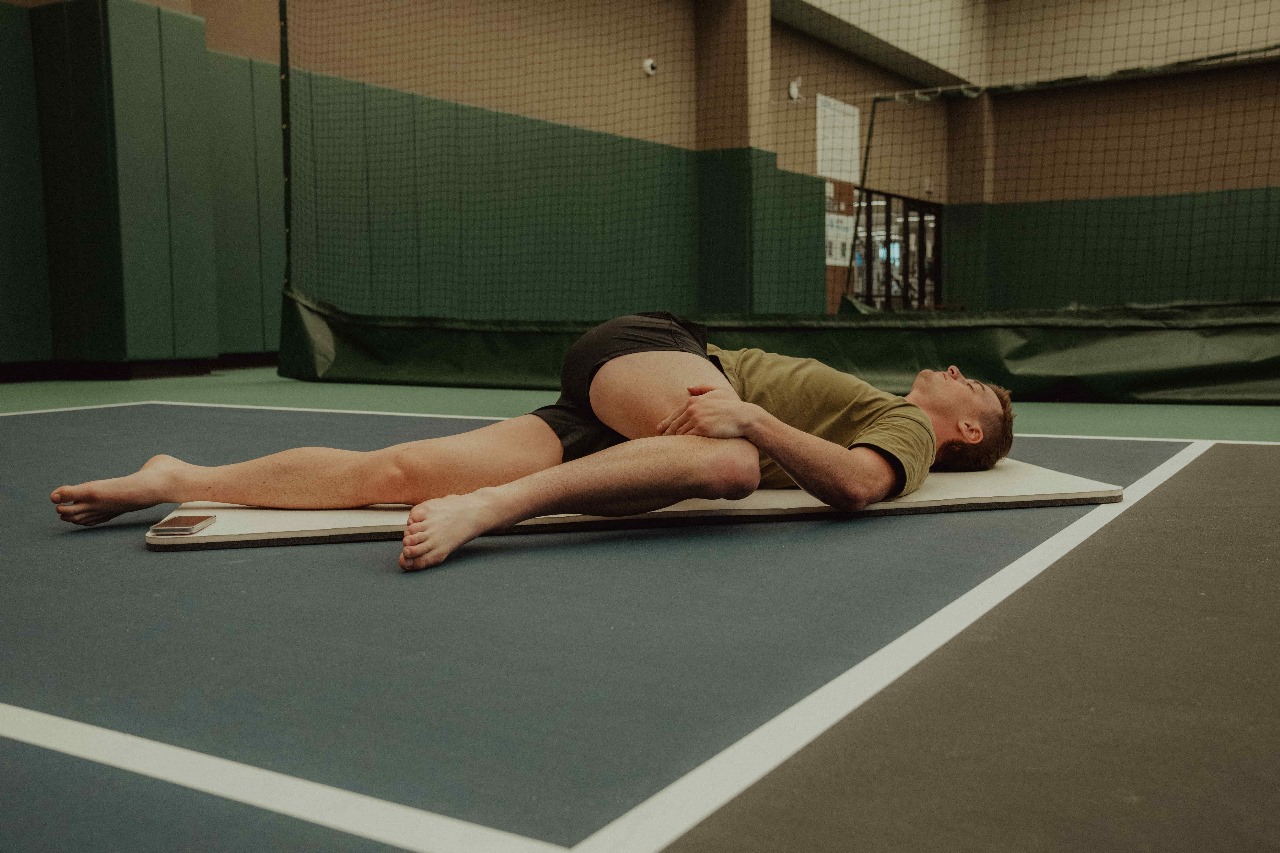
Stay active in small, steady ways. Stand up every 30 minutes when you sit for long periods. Take short walks, march in place, or do ankle circles to move blood through the calves and thighs. Add a five-minute routine twice a day:
- Calf stretch against a wall
- Seated hamstring reach
- A standing quad pull
Stay hydrated by sipping water throughout the day to support muscle function and reduce cramping. Swap flat shoes or high heels for a pair with good arch support and cushioning. Consider using insoles if your shoes lack sufficient support. These simple moves help reduce leg fatigue and stiffness quickly.
Compression and Massage Tricks You Can Use Tonight
Use compression stockings to help push blood up the leg and reduce swelling. Put them on first thing in the morning before your feet swell, and take them off at night. If you are unsure which strength to use, ask a pharmacist or your doctor for guidance.
Self-massage relieves tight muscles:
- Use gentle kneading on the calves
- Thumbs along the outer thigh
- Brush strokes from ankle to knee to aid circulation
A foam roller applied slowly across calves and hamstrings loosens knots. Finish with a short warm shower or a warm pack for muscle comfort.
Long-Term Habits That Keep Legs Loose Over Time
Establish a weekly routine that balances cardio and strength training. Aim for at least 30 minutes of moderate activity most days and two sessions of lower-body strength work each week. Include calf raises, bodyweight squats, and single-leg balance drills to strengthen the muscles that support veins and joints.
Adjust your diet to lower sodium, increase potassium from fruits and vegetables, and eat lean proteins to support muscle repair. Set small weight goals and track progress to reduce pressure on feet and veins. These steady habits lessen the chance of chronic swelling, cramping, and heaviness.
Coping Strategies for Managing Symptoms Effectively
- Try Epsom salt baths: Add 1 two 2 cups to warm bathwater and soak for 15 to 20 minutes to relax tight muscles and ease soreness.
- Use mild stretching exercises when you feel tight: Standing calf stretch, seated hamstring stretch, gentle thigh stretches, and ankle pumps.
- Knee raises work well while sitting: Lift one knee toward your chest, hold for a few seconds, then lower it, and switch to the other side to promote blood flow.
- Use simple meditation and breathing: Sit quietly, breathe slowly for five minutes, scan your body, and release tension in the legs. Combine these steps for a balanced approach to persistent sensations such as heaviness, cramping, numbness, and tingling.
How to Get Relief at Home Right Now
Elevate the legs when possible. Lie down and place pillows under your feet so they sit at or above heart level for 10 to 20 minutes to help drain pooled fluid. Switch positions often if your job requires you to sit or stand for extended periods; break up long stretches of the same posture with short walks or calf raises.
Wear graduated compression socks if you experience swelling or prolonged periods of standing on your feet. Reduce your salt intake to minimize fluid retention; compare food labels and opt for lower-sodium options.
Quit Smoking and Move Smart
If you smoke, seek help to stop because tobacco narrows blood vessels and harms circulation. Maintain a healthy weight range to reduce pressure on your joints and veins. Move regularly, but avoid overexertion; rest when sore and rebuild your strength gradually.
When to Seek Medical Help for Heavy or Tight Legs
See a doctor if you notice worsening swelling in one leg, sudden severe pain, redness, warmth, or changes to your skin. These can signal conditions such as a blood clot or advanced venous problems that require prompt care.
A vein specialist can test for varicose veins, venous insufficiency, or circulation problems and recommend treatments such as medical compression, procedures that close faulty veins, or a tailored exercise plan. Medical treatment may be needed when home measures do not ease symptoms or when the pattern of heaviness changes.
Related Reading
- Stiff Feet in the Morning
- How Can Poor Posture Result in Back Pain?
- How Long Stiff Neck Last
- Stiff Feet in the Morning
- Why Does My Knee Feel Stiff
- How to Treat Stiff Fingers in the Morning
- Joint Stiffness in the Morning
- What to Do for Tight Muscles
- Why Are My Calf Muscles So Tight
- How to Loosen Tight Muscles in Legs
- How to Loosen Tight Lower Back Muscles While Standing
When to See a Doctor for Leg Heaviness and Tightness
.avif)
If a leg becomes suddenly swollen, very painful, red, warm to the touch, or discolored, treat this as an urgent sign. Noticeable one-sided swelling or sharp calf pain when walking can point to a blood clot.
Difficulty Walking, shortness of breath, chest pain, fainting, or a rapid heartbeat with leg symptoms require immediate emergency care. These are not standard stiffness or muscle soreness and need fast evaluation.
Who Should Be Extra Careful: Known Health Risks
People with diabetes, heart disease, peripheral artery disease, a previous blood clot, recent surgery, cancer, pregnancy, obesity, or long periods of immobility face a higher risk of serious causes of heavy legs. Take extra care if you use hormone therapy or certain medications that increase clot risk, or if you smoke.
When to See a Doctor: Persistent Heavy Feeling in the Legs
It is essential to consult a doctor if a person regularly or persistently experiences a heavy feeling in their legs. They should also contact a doctor if heaviness in the legs occurs alongside other symptoms such as pain and swelling. Early assessment can help distinguish between simple muscle tightness and circulation problems, such as venous insufficiency, peripheral artery disease, or nerve-related causes.
What the Doctor Will Ask and Tests They Might Order
Your clinician will ask about timing, side-to-side differences, what makes the feeling better or worse, any numbness or tingling, recent travel or surgery, medication use, and overall medical history.
To reach a diagnosis, they may perform a focused examination and order tests such as a duplex ultrasound to assess blood flow, a D-dimer blood test, an ankle-brachial index, an X-ray or MRI for spine or joint issues, nerve conduction studies for neuropathy, or blood tests to rule out inflammation and metabolic causes. These steps guide the development of a tailored treatment plan.
Common Causes: Why Legs Feel Tight and Heavy
- Muscle tightness and overuse from exercise or standing for long hours.
- Delayed onset muscle soreness after new workouts.
- Dehydration and electrolyte imbalance cause cramping and stiffness.
- Chronic venous insufficiency and varicose veins cause heaviness and swelling.
- Deep vein thrombosis typically presents with unilateral swelling, warmth, and pain.
- Peripheral artery disease with cramping that comes on with exertion and eases with rest.
- Diabetic neuropathy causes numbness, burning, and a sense of weakness.
- Spinal stenosis or compressed nerves that create heaviness when standing or walking.
- Lymphedema or medication side effects that produce persistent swelling.
Quick Home Checks and First Steps
Observe whether the heaviness is one-sided or both, note any visible swelling, check skin color and temperature, and see if movement or elevating the legs changes the feeling. Try ankle pumps, short walks, and a brief calf stretch to see if symptoms ease. Avoid deep massage of a swollen, warm, or tender leg if a clot is present, and do not ignore new or worsening pain.
Safe Stretching Routines to Ease Tightness and Heaviness
- Ankle pumps: Sit or lie down and flex the foot up and down for 1 to 2 minutes to stimulate circulation.
- Calf wall stretch: Face a wall, step one foot back, press the heel down, and hold the stretch in the calf for 20 to 30 seconds. Repeat 2 to 3 times.
- Hamstring reach: Sit with one leg extended, hinge at the hips, and gently reach toward your toes for 20 to 30 seconds.
- Standing quad stretch: Hold your ankle behind you and pull your heel toward your buttock for 20 to 30 seconds, keeping your knees close together.
- Hip flexor lunge: Kneel on one knee and drive the hips forward gently to open the front of the thigh for 20 to 30 seconds.
- Gently foam roll the calves and quads for 1 to 2 minutes per area to ease tight tissue, but stop if sharp pain appears.
Start slow, breathe, and stop any move that produces severe pain, numbness, or increased swelling.
If You Suspect a Clot or Infection
Unilateral swelling with pain, warmth, redness, or fever raises concern for deep vein thrombosis or a skin infection. Avoid massaging the area and seek urgent medical assessment. If leg symptoms are accompanied by chest pain or sudden shortness of breath, call emergency services immediately.
Preparing for a Doctor Visit: Practical Tips
Bring a brief timeline of your symptoms, noting activities that trigger or relieve the feeling. List medications and recent travel or operations, and take photos of any visible swelling or skin changes. Ask about diagnostic options, treatment choices such as compression therapy, physical therapy, medications, or procedures, and what warning signs would require immediate care.
A Reassuring Note and Next Step to Consider
Seeing a doctor can help rule out serious issues and provide effective treatment options. If you choose to make an appointment, call your primary clinic or an urgent care now and bring your symptom notes with you.
Improve Your Flexibility with Our Mobility App Today | Get 7 Days for Free on Any Platform
Pliability offers a fresh take on yoga and mobility, tailored for athletes and performance-minded people. The app features a vast library of high-quality video sessions that focus on flexibility, recovery, pain reduction, and range of motion. You get daily updated custom mobility programs that adapt to your progress and schedule.
A built-in body scan highlights joint restrictions and asymmetries, enabling you to focus on areas that truly require improvement. Try the body scan to identify areas of tension in your body.
Related Reading
- Can Tight Hips Cause Knee Pain
- How to Loosen Tight Forearm Muscles
- Why Does My Forearm Feel Tight
- What Causes Stiff Neck
- How to Loosen Tight Jaw Muscles
- Why Do My Hands Feel Tight
- How to Loosen Tight Hips and Lower Back
- How to Loosen Tight Scalp Muscles



